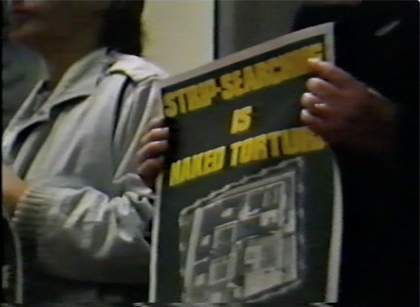Stop Strip Searching presents works by women filmmakers who were active in 1980s film collectives. The works look at the effects of British policies on women from different racial or religious backgrounds. Lai Ngan Walsh’s Who Takes the Rap explores how housing and labour laws kept working-class, Black, Asian and Irish immigrants in low-paid jobs and poor living conditions. The film features rapper Lorna Gee (AKA Sutara Gayle), who helps tell this story. It combines montage and archival images with footage of contemporary demonstrations and first-person accounts, brought together with a rapped soundtrack.
Anne Crilly’s Stop Strip Searching documents the strip-searching of women in prisons in the north of Ireland in the early 1980s. The work includes interviews with women, legal experts, psychologists, church leaders and activists. Both films were screened around the UK and used as campaign films for equal rights. Stop Strip Searching was Crilly's first work for the Derry Film and Video Workshop, a women-led group who explored the political situation in the north of Ireland including women’s issues, supported by Channel 4.
After the screening, Anne Crilly, Lai Ngan Walsh and Dr Isobel Harbison will discuss these films and their impact today.
This screening is supported by Culture Ireland

